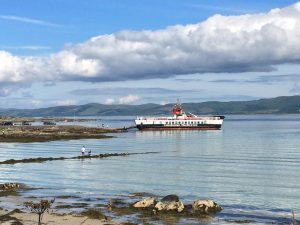
By Robin McKelvie
Sometimes I approach Scottish islands with a degree of trepidation, concerned that the hurdles facing the local community may have heightened since my last visit, threatening to become insurmountable. Not so with Gigha, a remarkable isle that has scarcely looked back since its community buy out back in 2002.
The most southerly of the Hebrides is a bijou charmer, a real life Treasure Island, its northern tip peering back to the hulks of the Paps of Jura. Gigha’s southern fringes are barely seven miles away, gazing over to Ireland. Sinewy Gigha may only be a mile and a half wide, but she packs a serious agricultural punch into her confines with acres of prime grazing land, land washed with the balmy tinges of the Gulf Stream, enjoyed by her hordes of cattle.
The farms and their cows are busy on Gigha – they have to be as the island produces gorgeously creamy milk that goes into the excellent local cheese and also is the backbone of Gigha ice cream. The island is also renowned for producing excellent farmed halibut and oysters, as well as world-class beef and lamb.
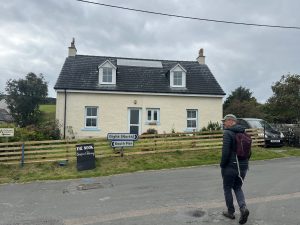
I wrote earlier in this blog that Gigha’s community has scarcely looked back since the community buy out. And I do mean scarcely, as it has not all been plain sailing. The Isle of Gigha Heritage Trust secured the land after it came to market in 2001 when the last private owner Derek Holt sold up. The community buy out was aided by £3.5 million from the Scottish Land Fund via the National Lottery and £500,000 from Highlands and Islands Enterprise. An agreement, though, to repay £1m saddled the fledgling community with debts that have long been a thorn in the side of the island, as I’ve heard on my four visits to Gigha since 2002.
“Community buy outs don’t lead automatically with no input to a land of milk and honey,” I’m told in the island shop this time. “But just look at what we have achieved.” It is impressive under any microscope. Before the buyout the island’s population had fallen to a precarious 92. Now it has swollen to nearly 170, with aspirations to continue upwards.
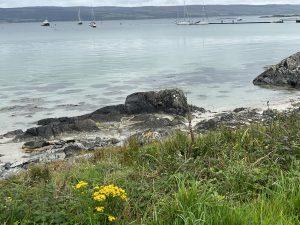
The primary school roll is on an upward trajectory too. In housing, I’ve seen epic changes too and there are plans for new community housing. On my first visit most houses seemed in poor condition; today most have been properly renovated. And powered by green electricity too – the island has its own wind turbines. My Scottish Islands Passport app tells me they are dubbed the ‘Dancing Ladies’. They sometimes produce so much power that it is sold back into the National Grid on the mainland three miles away.
On this visit, as I’ve come ashore whilst cruising the Hebrides with Argyll Cruising, a small Dunoon-based business who specialise in taking guests out to a sweep of Scotland’s island communities. Skipper Ted Creek tells me, “Gigha is a special island with a real spirit about the community. We always enjoy a warm welcome here and we encourage our guests to meet the community and spend a little money on the island, which we know feeds back into the community.”
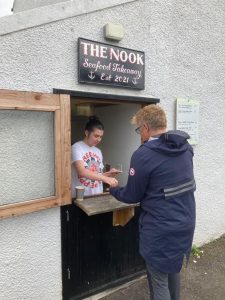
Landing at Ardminish it’s impossible to get both north and south, so I ask my good friend, island-specialist architect (the man behind Eigg’s An Laimhrig community hub, Iona’s new dynamic village hall and the community-owned An Crubh hub on Skye), Will Tunnell to head south to check out the 54-acre Achamore Gardens, which had become seriously overgrown last time I was on Gigha. Scottish Islands Passport informs me the gardens were first laid out by Sir James Horlick, of comforting malty bedtime drink fame. Will comes back cheery-faced, delighted to have found two full-time gardeners and a sprinkling of local volunteers breathing new life into one of the most impressive and historic gardens in the Scottish isles.
I head north, but not before a good root around the island’s community nucleus. The glorious Boathouse is closed as it’s a Monday. Missing out on a top-notch restaurant Michelin have hailed for the last five years in a row proves a boon as I instead discover The Nook. This wee oasis has sprung up next to the island’s shop. It serves an impressive collage of local seafood, from queenie scallops through to the island’s famed Gigha halibut. I’m deeply saddened to hear that rising costs and energy bills have put paid to the halibut business, but cheered to hear both The Nook and Boathouse will still be powering on with tweaked menus.
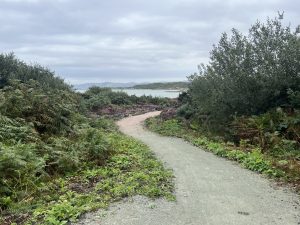
I find positivity sprinkled around Gigha. And impressive new projects. There are new craft operations and the watersports hire from Gigha Activity Centre has expanded – they now have e-bike hire too. The paths certainly have expanded – the mass of farming land sometimes makes walking around Gigha tricky, but 9km of new and upgraded paths make a real difference. As does the new off road cycling route to the new campsite by the ferry, that means you don’t have to ride on the narrow main road, which can be busy with farm and tourist traffic in summer.
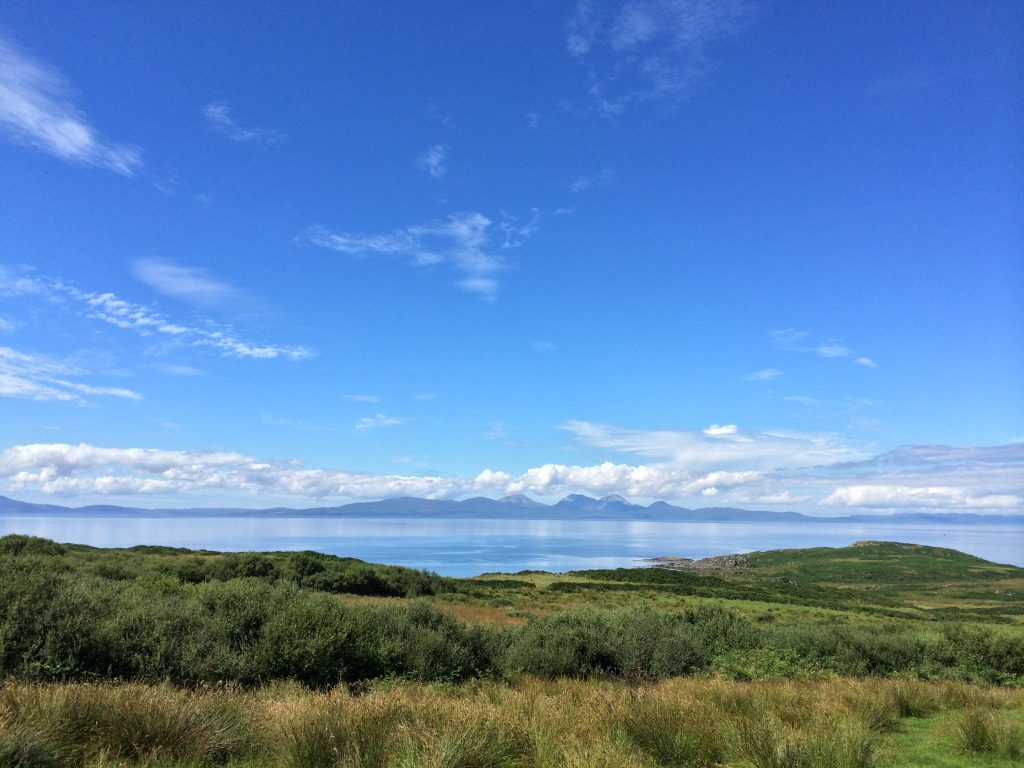
Yomping three miles north I make it to the ‘Dwarf Stone’. I have in common with most Scottish islanders that I’m a glass half full kind of guy. I could focus on one of the legends behind this vaulting standing stone that dubs it the ‘Hanging Stone’, but instead let’s stick with the version that the pronounced cleft in the rock was where local lovers shook hands through to seal their romantic union. Peering out here to the brooding hills of Jura and Islay I’m swept with own sense of romance too.
As ever on my Scottish island visits these days, I learn more details about the island and of new experiences through the Scottish Islands Passport app. I’m glad I’ve downloaded the Gigha entry on to my phone from the app as my mobile signal is dodgy. I learn of another gorgeous beach, Cuddyport, a real hidden oasis that comes with historic quern stone carvings. There is an entry on Gigha’s Dark Skies, information on local walks and how Gigha fits well into the Hebridean Whale Trail.
All too soon it’s time to burrow back to Ardminish, where Ted is waiting with a wee tender to spirit me back to the welcoming bosom of the Splendour. I leave Gigha feeling as I hoped I would – reassured that the community buy out continues to be a success for this impressive slice of the Hebrides and that the future of Gigha is safe in the hands of its dynamic community. I raise a glass to them and to this quite glorious island as we putter away.


